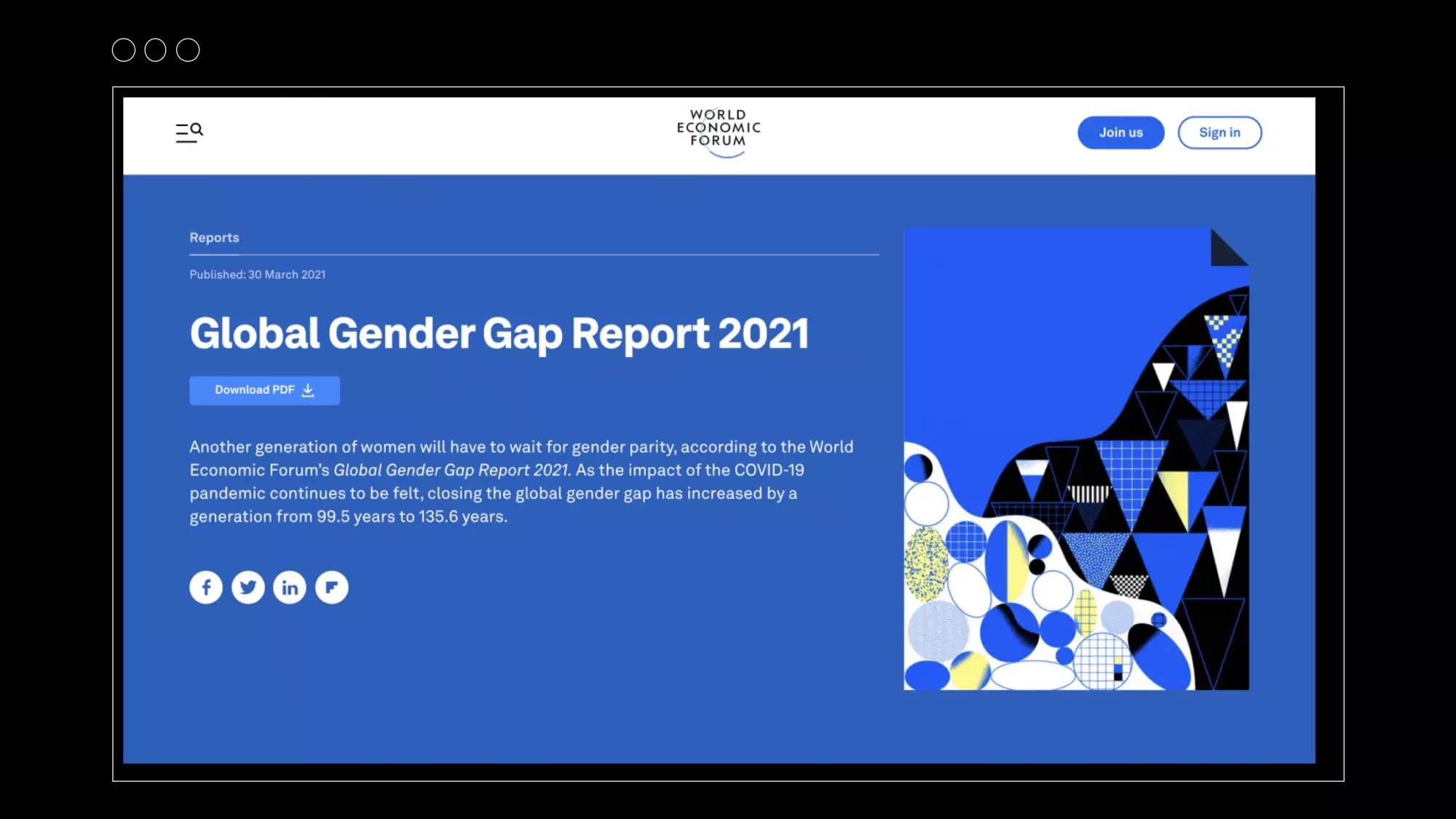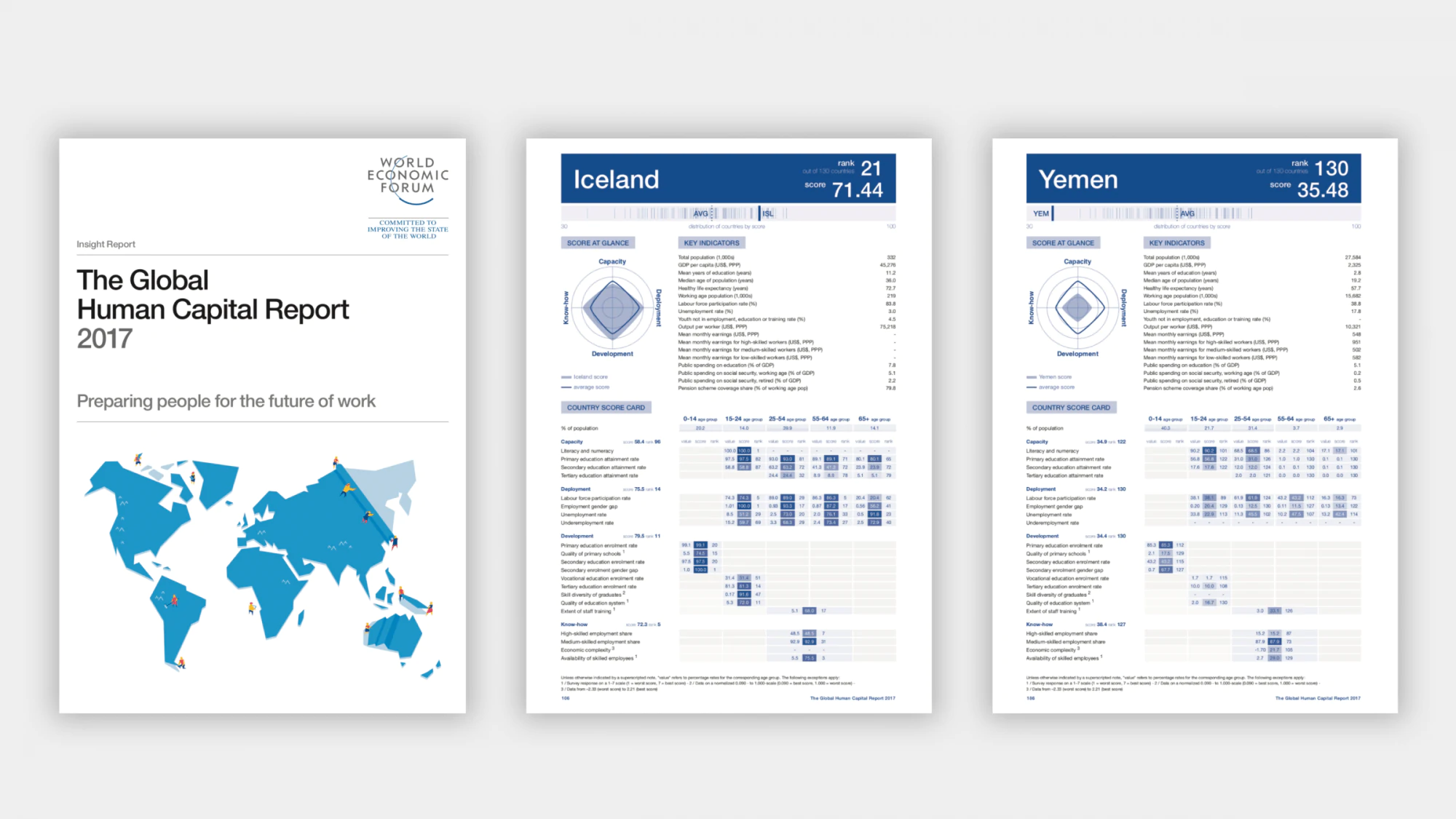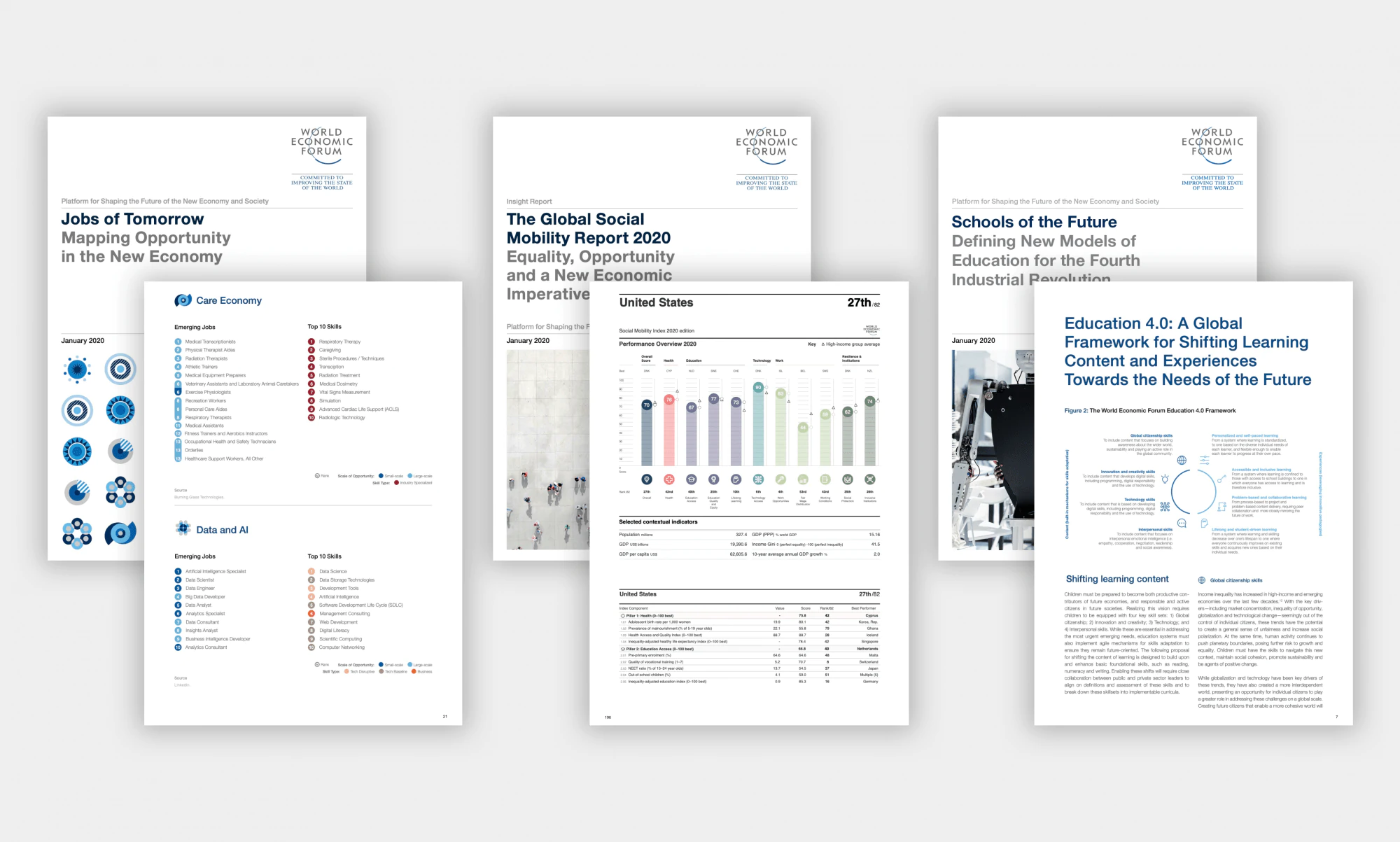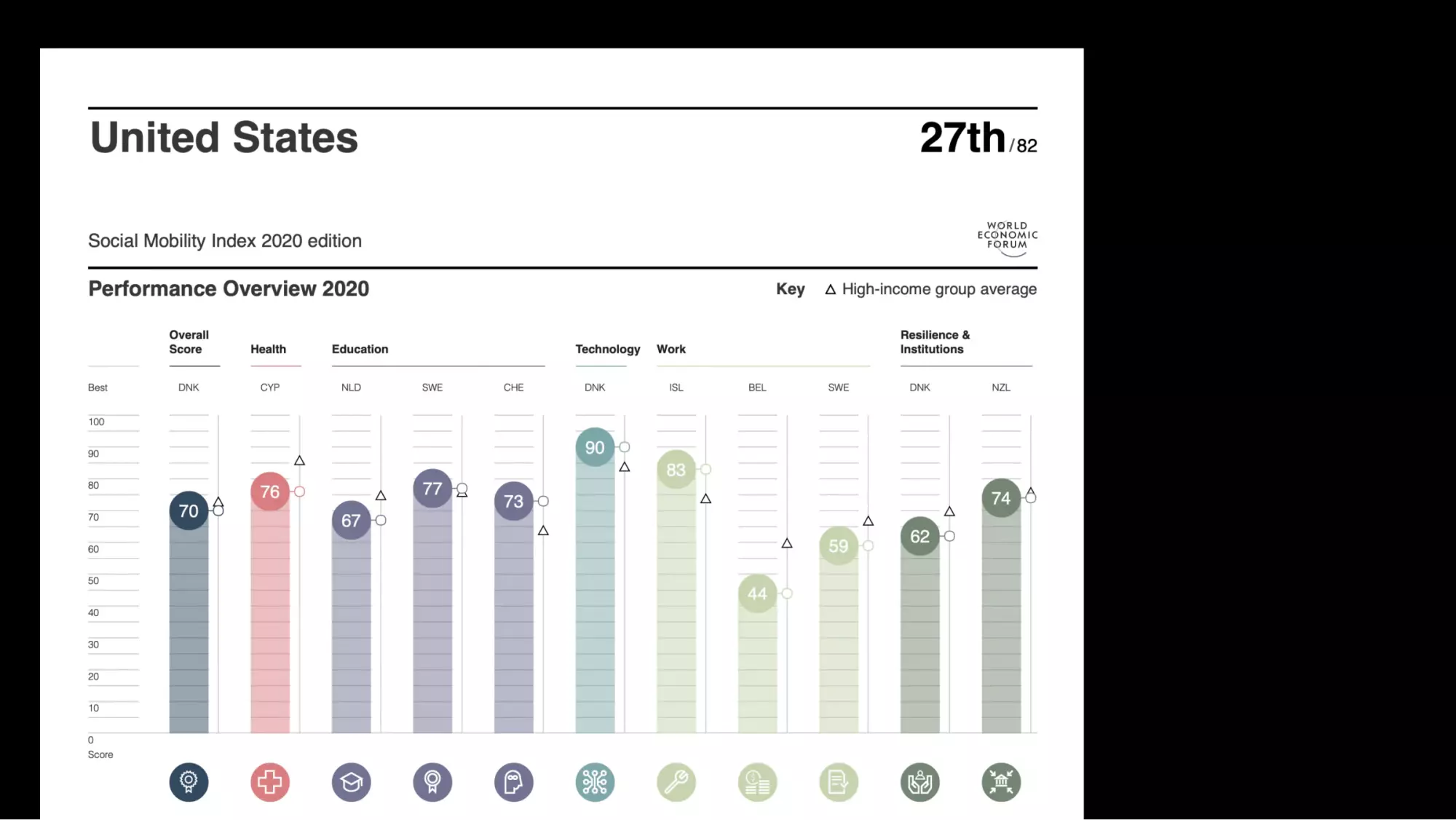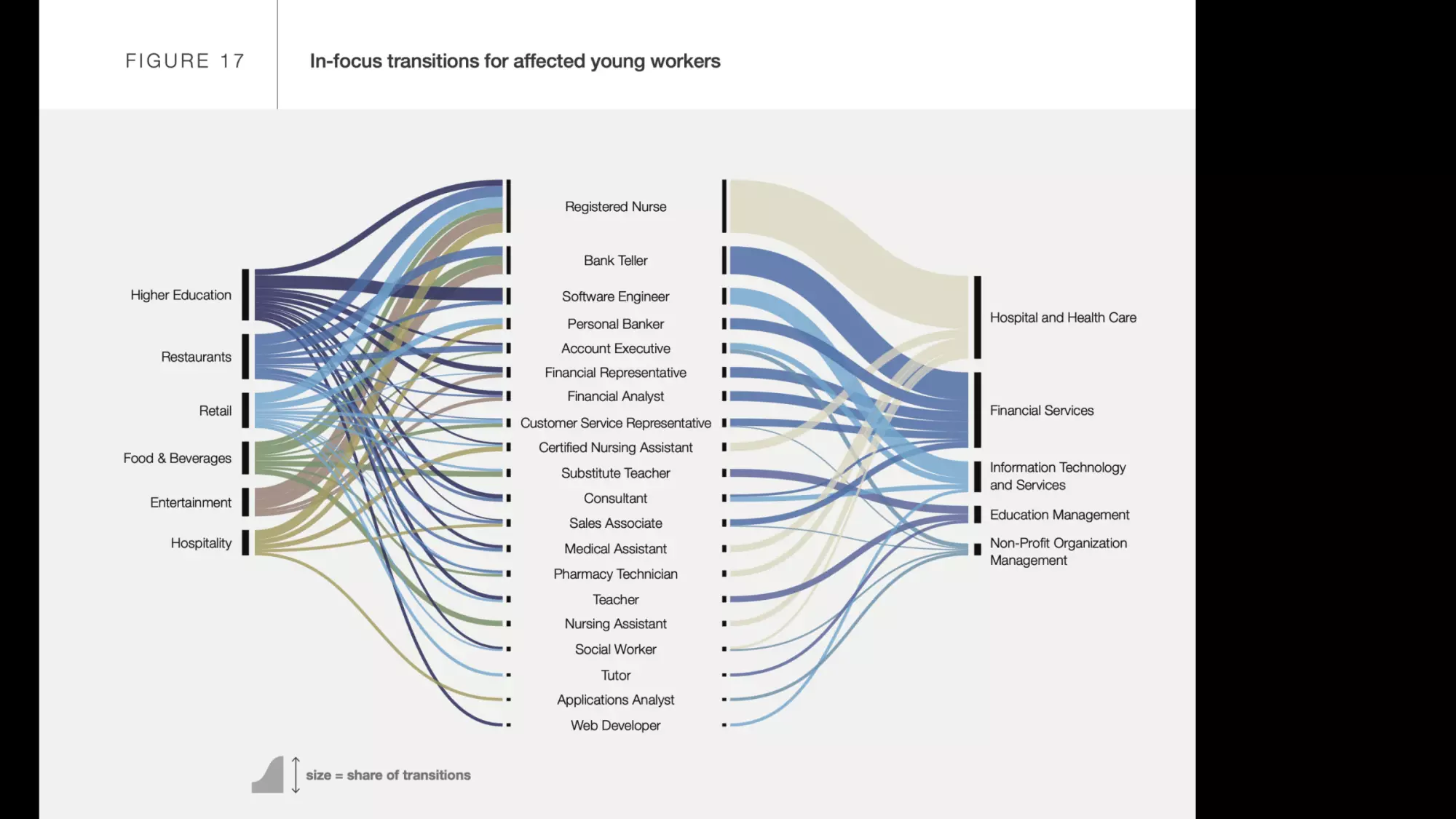Released annually, the Global Gender Gap Report assesses the quality of life for women in over 150 countries. “Country profiles”—essentially, “score cards” that justify a numerical ranking—constitute the majority of the lengthy report. Prior to 2016, data scientists generated content manually. The time–consuming process was made all the more precarious by the fact that countries are asked to self–report information. Bottlenecks—and cascading delays—were all but certain, given the likelihood of data to arrive at the eleventh hour. And to boot, information was only available online as a PDF file.
In 2016, WEF's Frontier Insight team was pursuing solutions to streamline the production of their Global Gender Gap Report. Under deadline, team lead and report author Vesselina Ratcheva contacted Accurat for help in automating a cumbersome process.
We developed software to instantaneously generate full profiles using variables that could be easily updated, effectively automating the creation of nearly 300 pages of the report. When the time came for it to be updated in 2017, Ratcheva’s team returned to Accurat for a refresh, and asked for help with another issue: adapting the document to a web–optimized experience. Integrating with WEF’s site, we built an intuitive, map–based data explorer that made it easy for users to find and export country–specific data. These innovations lowered a threshold for accessibility and made the Global Gender Gap Report available to its biggest audience yet.



